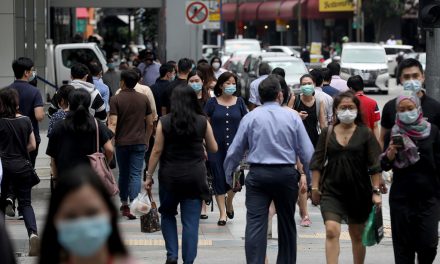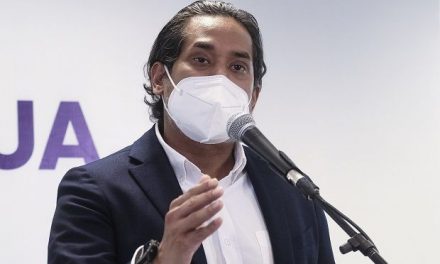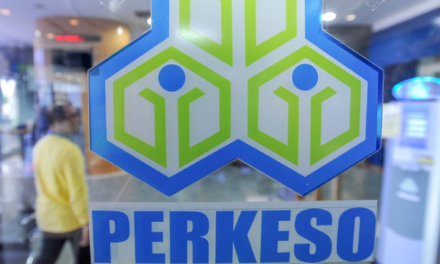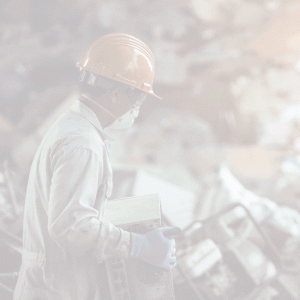Hearing is one of the basic senses we developed at birth[1] and one that we often don’t pay heed to growing up, unless we are faced with a hearing complication.
According to the Department of Occupational Safety and Health (DOSH)[2], sound is a sensation of acoustic waves while unpleasant, unwanted, and disturbing sound is generally treated as noise. That being said, noise is actually a highly subjective feeling – what is sound to one person can very well be noise to somebody else.
Did you know that noise induced hearing loss is one of the most common occupational disease[3] and workers in the industrial jobs are prone to accidents and health problems linked to long exposure of noise?
Noise hazard is one of the prevailing safety concerns in the working environment. To begin, we need to first understand the hazard itself.
What is Noise Hazard?
Noise is any sound that the human ear finds unpleasing or disruptive to concentration, and that sound become noise hazards when it begins to interfere with communication, warning signals on the job, and cause chronic health problems.[4]
The higher the level of noise, and the longer individuals are exposed to it, the more risk they have of suffering harm from it. Occupational noise-induced hearing loss (NIHL) is a major compensable occupational disease in Malaysia which involves substantial economic burden[5]. Exposure to excessive noise also entails largely unrecognized costs to organizations by way of increased employee turnover and absenteeism, lowered performance and possible contribution to accidents.
Additionally, the social handicaps of occupational noise related hearing disorders (ONRHD) to the affected individual are also severe. ONRHD are irreversible and lead to communication difficulties, impairment of interpersonal relationship, social isolation and deterioration in quality of life. The family and others who are close to the affected person often experience secondary consequences from this condition.
Naturally, because we rely on hearing in crucial everyday activities, it is one of the most important senses that we need to protect.
So, how loud is too loud?
We need to first understand that the sounds that we hear are measured by a logarithmic unit known as decibels (dB).
According to the Malaysia Occupational Safety & Health (Noise Exposure) Regulations 2019, the new Noise Exposure Limit (NEL) have been revised from 90 to 85 dB(A) over a time span of 8 hours. An employer must not expose any employees to noise above the NEL and no exposure to maximum sound pressure level of 115 dB(A) at any time and peak sound pressure level of 140 (dB). Hearing conservation training for workers are also required on a yearly basis. Some companies, like 3M can provide training support and a certificate will be issued for record.
Below you will find examples of familiar noise sources and their average decibel readings[6].
| Object | Noise | Description |
| Muffled conversation in office setting | 60 (dB) | Fairly quiet. |
| Vacuum cleaner | 70 (dB) | Considered at “nuisance level” to most people.
[ 70(dB) is twice as loud as 60(dB)] |
| Food blender | 80 (dB) | Hearing protection is recommended for extended exposure.
[80 (dB) is considered twice as loud as 70 (dB)] |
| Lawnmower, motorcycle at 25ft | 90 (dB) | Hearing protection is required to conserve hearing. |
| Jet taking off at 300m | 100 (dB) | Serious hearing damage without protection. |
| Chainsaw | 120 (dB) | Potentially painful without protection. |
| Jet taking off at 25m | 150 (dB) | Potential for ear drum rupture. |
Tip: When you need to raise your voice to speak to someone who is 3 feet away, the noise level may be over 85 (dB)[7].
Noise may be a problem at a workplace if[8]:
- Employees notice a reduction in hearing over the course of the day.
- Raised voice needed to communicate with someone about one meter away.
- Employees can’t clearly hear instructions or warning signals.
- Workers experience ringing in the ears or sound heard differently in each ear.
In 2018, the total of Malaysia’s Employment Accident Rate reported by the Department of Occupational Safety and Health is just over 35,000. Although it shows a decline since 2017 (which was a total of 42,513), DOSH reported that there are over 6,000 cases of hearing damage related to occupational noise in 2018. That makes hearing damage the most common occupational hazard in Malaysia[9].
There are many cases in which a worker is exposed to noises that are exceptionally dangerous for the ears. For example, construction and factory workers who are on-site with exposure to loud noises for more than eight hours on a daily basis are at high risk of hearing damage.
It is important to note that the effects of exposure to loud noises do not happen overnight. This is because hearing damage doesn’t solely depend on the actual noise but also the exposure time. As such, preventive measures need to be taken. As easy as it is to damage our ears, it is easy to protect them as well. Injuries associated with hearing and the damages that occur are lifelong.
When the tiny sensory hair cells are repeatedly exposed to excessive doses of noise, they break. The surviving sensory hair cells can only process a fraction of the usual information transfer thus, leading to permanent hearing damage[10].
Symptoms of hearing damage
Here are the symptoms identified for hearing damage stated by CDC[11]:
If you have any of these signs or symptoms of hearing loss, get tested by a qualified healthcare provider.
- Speech and other sounds seem muffled.
- Difficulty hearing high-pitched sounds. (e.g., birds, doorbell, telephone, alarm clock)
- Difficulty understanding conversations when you are in a noisy place, such as a restaurant.
- Difficulty understanding speech over the phone.
- Trouble distinguishing speech consonants. (e.g., difficulty distinguishing the difference between ‘s’ and ‘f’, between ‘p’ and ‘t’, or between ‘sh’ and ‘th’ in speech)
- Asking others to speak more slowly and clearly.
- Asking someone to speak more loudly or repeat what they said.
- Turning up the volume of the television or radio.
- Ringing in the ears.
- Hypersensitivity to certain sounds (certain sounds are very bothersome or create pain)
Ways To Attenuate Hearing Damage[12].
Although noise-induced hearing loss is the most common occupational health condition in the world, it is preventable.
- Always wear hearing protection, correctly.
Be sure to always wear hearing protections, correctly when exposed to dangerous noise levels. When worn incorrectly, wearers may experience discomfort and more importantly, it may not offer suitable protection. There are many variants of hearing protection as each model or type is designed to address different worker needs and pain points.
Wearer should ensure the hearing protector tightly seals within the ear canal or against the side of the head. Hair and clothing should not be in the way. Choosing the right hearing protection[13] for your needs can be difficult as it depends on several factors[14] including level of noise, comfort, and the suitability of the hearing protector for both the wearer and the environment.
The hearing protection should neither over nor under protect the wearer. 3M has an easy to use selection system for E-A-RTM and PeltorTM products that aids the correct selection of hearing protection appropriate to the noise level. 3M E-A-Rfit™ Dual-Ear Validation System is a simpler way to measure wearer’s personal attenuation level. The hearing protection fit testing[15] takes the guesswork out of managing compliance in hearing conservation programs.
The features include:
- Tests both ears simultaneously in less than 5 seconds.
- Earmuff and Earplug testing capability.
- Tests at seven standard frequencies – 125Hz to 8000Hz.
- Science-based, objective, quantitative testing.
- Reduce the noise exposure[16].
Additionally, when the environment at your workplace is noisy but unavoidable, here’s what you can do:
- Reduce noise at the source of the noise. Use quieter equipment and keep equipment well maintained and lubricated.
- Enclose the source of the noise or place a barrier between you and the source.
- Increase the distance between you and the source of the noise.
- Reduce your time in noisy areas.
- Reduce exposure to chemicals that may cause hearing damage[17].
Yes, chemicals can cause hearing damage. Exposure to ototoxic chemicals may be hazardous to workers health when inhaled, ingested or absorbed by skin. According to OSHA, the health effects can vary based on frequency, intensity, duration, workplace exposure to other hazards, and individual factors such as age.
The ototoxic chemicals are potentially found in manufacturing, mining, utilities, construction, and agriculture industries. The chemical found in paints, thinners, degreasers, glues, and engine exhausts can travel through the blood stream and once it enters the body, the results can damage the nerves in the inner ear.
If there is a choice, using a less toxic or non-toxic chemical may prolong the lifespan of your ears. However, if that is also unavoidable, you should always wear gloves, long sleeves and eye protection. This is also a common physical hazard that needs to be prevented. You should also wear a respirator or other protective equipment as necessary.
About 3M Malaysia
Embodying a culture of innovation that transcends boundaries from electronics to safety and health care to industrial, 3M has been improving lives in Malaysia for more than 50 years. Founded in 1967, 3M Malaysia has grown from its humble beginnings with only 8 employees, to a company with over 300 employees. 3M’s presence in Malaysia includes a local business hub for operations, sales and marketing headquartered in Petaling Jaya, a Customer Innovation Center in Shah Alam, a manufacturing facility in Seremban and an office in Penang. For more information on 3M, please visit www.3m.com.my.
About 3M
At 3M, we apply science in collaborative ways to improve lives daily. With $32 billion in sales, our 96,000 employees connect with customers all around the world. Learn more about 3M’s creative solutions to the world’s problems at www.3M.com or on Twitter @3M or @3MNews.
[1] https://www.asha.org/public/hearing/How-We-Hear/
[2] https://www.dosh.gov.my/index.php/presentation-slides/konvensyen-sohelp-kebangsaan-2017/2520-kertas-2-pendedahan-bising-dan-pengurusan-ergonomik-di-tempat-kerja-the-way-forward/file
[3] https://www.who.int/news-room/fact-sheets/detail/protecting-workers’-health
[4] https://www.graphicproducts.com/articles/8-ways-to-identify-and-eliminate-noise-hazards-in-the-workplace/#:~:text=When%20annoying%20sounds%20become%20noise,over%20an%20eight%20hour%20shift.
[5] https://www.dosh.gov.my/index.php/legislation/codes-of-practice/industrial-hygiene/3286-industry-code-of-practice-for-management-of-occupational-noise-exposure-and-hearing-conservation-2019/file
[6] https://carleton.ca/ehs/programs/working-workshop/noise-hazards/
[7] https://www.osha.gov/SLTC/noisehearingconservation/
[8] https://www.dosh.gov.my/index.php/legislation/codes-of-practice/industrial-hygiene/3286-industry-code-of-practice-for-management-of-occupational-noise-exposure-and-hearing-conservation-2019/file
[9] https://www.dosh.gov.my/index.php/list-of-documents/download/analisis-kkp/3238-infografik-kemalangan-pekerjaan-2018/file
[10] https://multimedia.3m.com/mws/media/711107O/3m-hearing-protection-brochure.pdf?fn=Hearingcatalogue.pdf
[11] https://www.cdc.gov/nceh/hearing_loss/how_do_i_know_if_i_have_hearing_loss.html
[12] https://www.cdc.gov/niosh/topics/noise/preventhearingloss/default.html
[13] https://multimedia.3m.com/mws/media/711107O/3m-hearing-protection-brochure.pdf?fn=Hearingcatalogue.pdf
[14] https://www.ccohs.ca/oshanswers/prevention/ppe/ear_prot.html
[15] https://www.3m.com.au/3M/en_AU/worker-health-safety-au/safety-equipment/hearing-conservation/hearing-protection-fit-testing/
[16] https://www.cdc.gov/niosh/topics/noise/preventhearingloss/default.html
[17] https://www.osha.gov/dts/shib/shib030818.html








